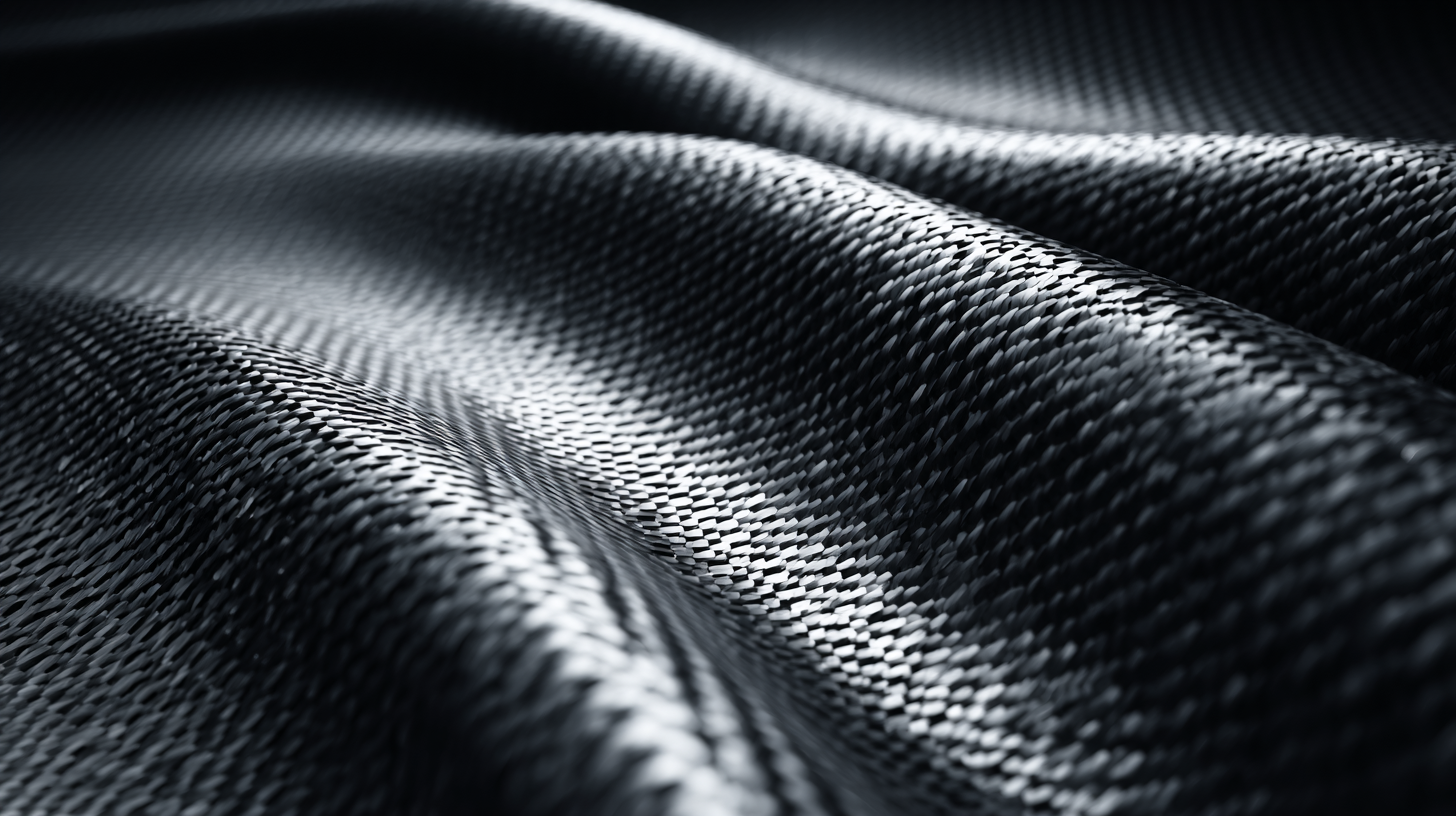
- Ginazhao@wanglumaterial.com
- Mon - Sat at 7:00AM to 9:00PM



The advent of carbon fiber panels is set to transform various industries by offering enhanced durability, lightweight properties, and sustainability. According to the latest report from MarketsandMarkets, the carbon fiber market is projected to reach $5.57 billion by 2026, growing at a CAGR of 10.4% from 2021 to 2026. This trend underscores the increasing demand for carbon fiber materials across automotive, aerospace, and construction sectors. With the global automotive industry striving for improved fuel efficiency and reduced carbon footprints, the integration of carbon fiber panels is becoming crucial. Additionally, a study by the American Composites Manufacturers Association highlights that composites, including carbon fiber, can reduce vehicle weight by up to 50%, leading to significant emissions reductions. As we explore the future of carbon fiber panels, it's clear that their role in promoting sustainability and innovation is not just a trend but a necessity for achieving a greener economy.

Carbon fiber panels are increasingly recognized for their innovative properties, setting new standards in various industries. Known for their exceptional strength-to-weight ratio, carbon fiber composites can be up to five times stronger than steel while weighing only a fraction of the weight. This unique combination allows manufacturers to not only reduce vehicle weight, improving fuel efficiency by as much as 20-30%, but also enhance structural integrity across applications in automotive, aerospace, and construction sectors. According to a report by MarketsandMarkets, the carbon fiber market is projected to grow from USD 3.2 billion in 2020 to USD 5.9 billion by 2025, highlighting a growing trend towards the adoption of this advanced material.
In addition to their mechanical advantages, carbon fiber panels offer significant benefits for sustainability. Their durability leads to reduced maintenance needs and longer lifespans, resulting in decreased resource consumption over time. By replacing traditional materials, carbon fiber has the potential to lower carbon emissions during production and usage phases. The National Renewable Energy Laboratory reports that incorporating carbon fiber materials can lead to a 20% reduction in lifecycle emissions for electric vehicles. As industries continue to evolve, the focus on sustainable solutions underscores the need for innovative materials like carbon fiber panels, pushing the boundaries of design and efficiency while supporting environmental goals.
The advent of carbon fiber panels is transforming automotive design and manufacturing, leading to significant advancements in vehicle performance and sustainability. These lightweight yet extraordinarily strong materials enable manufacturers to create vehicles that are not only faster and more fuel-efficient but also more environmentally friendly. By replacing traditional materials such as steel and aluminum, carbon fiber reduces the overall weight of vehicles, which in turn decreases fuel consumption and emissions. This shift not only enhances the driving experience but also aligns with global efforts to combat climate change.
Furthermore, the versatility of carbon fiber panels allows for innovative designs that were previously unattainable. Automakers can create complex shapes and structures, pushing the boundaries of aesthetic appeal and aerodynamic efficiency. This capability opens up new avenues for customization, enabling manufacturers to cater to consumer preferences while maintaining structural integrity. As the industry continues to embrace carbon fiber technology, we can expect to see a new wave of automotive designs that prioritize both performance and sustainability, marking a pivotal moment in the evolution of vehicle manufacturing.
| Dimension | Description | Impact | Sustainability Factor |
|---|---|---|---|
| Weight Reduction | Carbon fiber panels are significantly lighter than traditional materials. | Improved fuel efficiency and performance in vehicles. | Lower carbon emissions due to enhanced fuel economy. |
| Strength-to-Weight Ratio | Exhibits high tensile strength while being lightweight. | Enhanced safety and durability in automotive applications. | Longer lifespan of vehicles reduces waste and resource use. |
| Manufacturing Efficiency | Can be produced using advanced automated processes. | Reduction in manufacturing time and labor costs. | Less energy consumption during production stages. |
| Design Flexibility | Allows for complex shapes and designs not achievable with metals. | Encourages innovative design approaches in automotive engineering. | Promotes the use of eco-friendly designs and materials. |
| Corrosion Resistance | Resistant to rust and chemical reactions, outperforming metals. | Decreases the need for protective coatings and treatments. | Reduces harmful chemicals used in maintenance processes. |
The construction industry is embracing innovative materials to meet the growing demands for sustainability, with carbon fiber panels leading the charge. Recent studies show that carbon fiber can reduce the weight of structural components by up to 50% while maintaining exceptional strength. This weight reduction not only enhances the structural integrity of buildings but also leads to significant savings in energy during both the construction and operational phases. For instance, a report from the International Carbon Fiber Manufacturing Association revealed that using carbon fiber in construction can contribute to energy savings of approximately 30% when compared to traditional materials.
Moreover, the environmental benefits of carbon fiber panels are substantial. Unlike traditional construction materials, carbon fiber has a lower carbon footprint due to the efficiency of its production processes and the potential for recycling. According to a report by the Carbon Fiber Composites Association, the embodied carbon emissions of carbon fiber techniques can be decreased by as much as 40% over their lifecycle. As sustainability continues to shape the future of construction, the integration of carbon fiber is proving to be a transformative solution, paving the way for greener buildings that align with global climate goals.
The advancements in carbon fiber technology are significantly transforming the aerospace industry, paving the way for lighter, stronger, and more efficient aircraft. According to a market report by Research and Markets, the global carbon fiber market in aerospace is projected to reach $5.8 billion by 2025, driven by an increasing demand for fuel efficiency and reduced greenhouse gas emissions. This shift towards lightweight materials has enabled manufacturers to design aircraft that consume up to 15% less fuel, providing both economic and environmental benefits.
Moreover, carbon fiber composites are not only about weight reduction; they offer remarkable strength and resilience, making them ideal for high-performance applications in aviation. The Aerospace Industries Association notes that carbon fiber-reinforced polymers can withstand extreme temperatures and stresses, crucial for modern aircraft that face demanding operational conditions. With the continual investment in research and development, the aerospace sector is embracing these innovations, anticipating that carbon fiber technologies will play a pivotal role in achieving sustainable aviation goals while enhancing overall performance and safety.

The growing interest in carbon fiber panels, particularly in their cost-effectiveness compared to traditional materials, marks a significant shift in various industries, including automotive and aerospace. Recent advancements in recycling technologies for carbon fiber reinforced polymer (CFRP) are paving the way for more sustainable practices. With the recycled carbon fiber market projected to reach $0.31 billion by 2030, industries are recognizing the economic benefits of utilizing recycled materials that reduce production costs and minimize environmental impact.

Moreover, the lightweight yet durable nature of carbon fiber panels offers substantial advantages over conventional materials. This transformation is evident in the automotive sector, where the demand for lightweight body panels is expected to surge, with a market estimate of $310.39 billion by 2032. As manufacturers continue to explore high-performance thermoplastics and optimize processing conditions, carbon fiber panels are positioned to not only enhance vehicle performance but also contribute to a more sustainable future in manufacturing.
The integration of these materials represents a synergy of cost-effectiveness and innovation, essential for meeting the evolving demands of modern industries.





